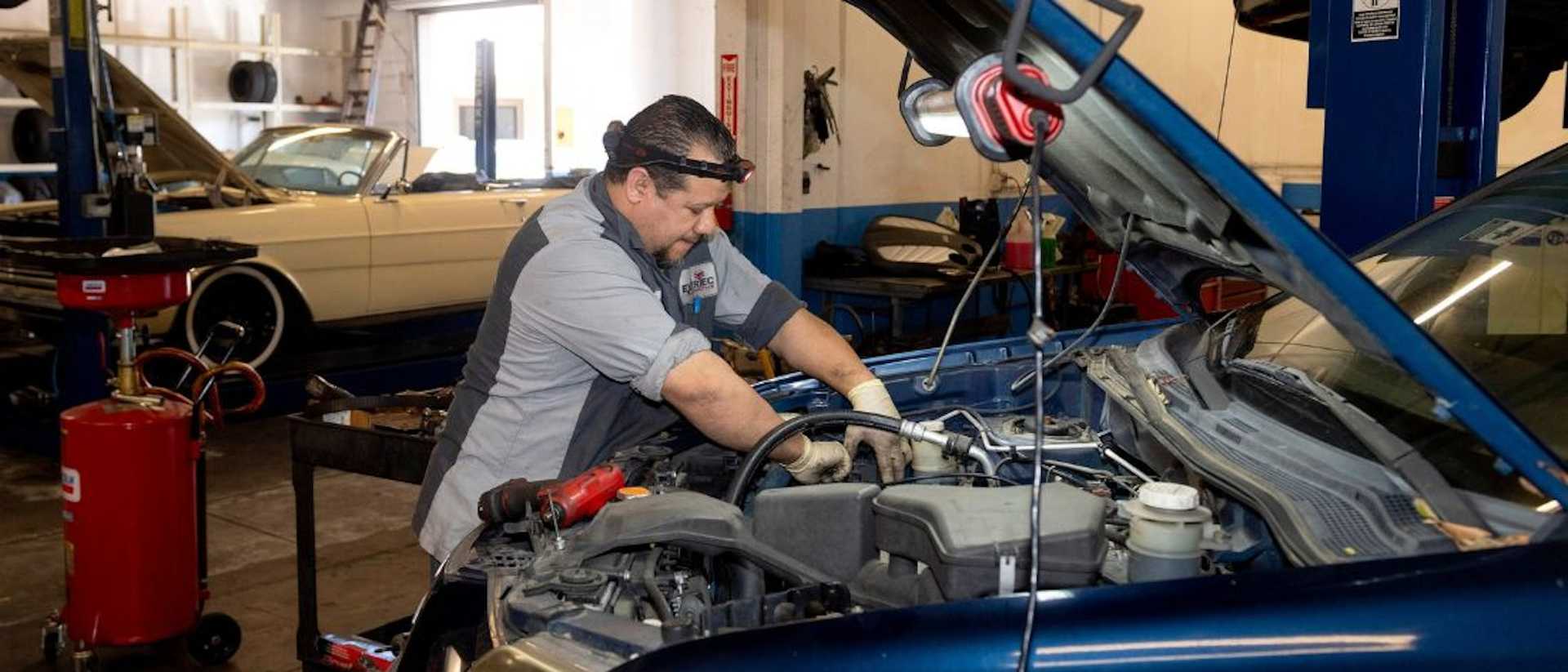Asset Finance - Everything You Need to Know
.png)
When you own a business, you may find yourself in need of certain assets that aren’t always easy to acquire at the drop of a hat. Let’s say a ute, for example.
Asset financing is the type of funding solution a business will use to seize a growth opportunity when they don’t have the money to fully capitalise. It’s not just for businesses without liquidity; it’s also for businesses that like to spread big purchases over the course of several months or years.
Asset financing means taking an existing business asset and using it as collateral for a line of credit.
There’s a lot more to asset finance, however, and that’s what we’re going to cover in this article.
Let’s get into it.

What are the different types of asset finance?
Hire purchase
Typically, in the case of a ‘hire purchase,’ you have a transaction between a finance company and your business. An example of this would be your business paying monthly instalments to a lender, who has purchased an asset on your behalf for you to use on credit.
Once you’ve repaid all monthly payments on these loans, you’ll be given an option; to pay a nominal amount and purchase the equipment, or simply return the asset and stop using their leasing services.

Equipment lease
This is the more flexible type of arrangement when it comes to funding asset finance. Typically, a business will agree to pay the finance company for using the equipment for however long they agree on, and then at the end of the lease, they’ve got options.
One, purchase the equipment from the finance company, extend the leasing agreement, or return the equipment.
Operating lease
The flexible short-term option of an operating lease is similar to the previous option. The lease length is short, and the overall costs are low. However, the monthly payments are much higher. It’s a more expensive option than some of the others available when it comes to the long term.
This type of asset finance would be used by businesses that need to use equipment or an asset as soon as possible, but only for a short amount of time.

Finance lease
This option presents asset finance has its pros and cons. A finance lease is one that gives businesses the obligation of owning the desired asset onto the business instead of it being the responsibility of the finance company.
What this means is that while you borrow credit to pay for the asset, you’re still responsible for its maintenance, upkeep, and repairs.
Assets refinance
The above options all help a business to access the assets it needs. On the other hand, an asset refinancing facility is what helps a business release tied-up capital in assets that the business already owns.
This requires you to use your business's assets and/or property as collateral.
As a result, you’re able to borrow on a line of credit that helps you increase your business's working capital. Entering into these sorts of credit services is often exactly what businesses in Australia need to ensure they can continue to expand and grow into the future.
What are the advantages of using asset finance?
You can buy other assets that you or your business need
The biggest advantage of using asset finance is that your business gets an asset it desperately needs.
This can come in many shapes and forms.
It could be credit for more delivery cars needed to keep up with customer orders, it could be more security staff to secure your bottle shop business.
Whatever it is, you are going to be faced with opportunities and questions about how you can improve your business and an asset is often going to be part of the answer. Asset finance is for those businesses that don’t just have the money lying around to get that asset.
Instead, they need to turn to sources of finance such as asset finance to acquire the asset in question and improve their business.

You’re not subjected to upfront costs.
When dealing with business financials, the asset in question will often be expensive, and paying upfront can put you in a position no business wants. With asset finance, however, you can get the asset and fund it at no initial cost to the business.
This could mean the difference between gaining a high-value customer if you’re a freelancer or perhaps allowing you to purchase an asset your business needs to get above your competitors in Australia.
So when you’re in a position where you need an asset and need it fast, asset financing is a great way to acquire it without putting the business at risk. Instead, you get to embark on a growth opportunity without the funding affecting other business areas.
Your business gets a needed increase in cash flow.
One of the most apparent advantages of asset financing is that your business gets an increase in cash flow. There are no upfront payments, and you’re spreading the burden of paying for this asset over several months.
As a result, you can engage in better management of working capital. It also opens you up to invest in areas of your business that are known to generate the most revenue but also possess the most opportunities for growth.

Tax benefits
Because asset finance payments are considered a deductible expense, you’ll be saving your business even more money.
It’s a great justification for getting the asset as you’ll be able to claim it as a deductible which justifies the money you’re spending monthly, having it around helping you grow the business.
This helps reduce debt in the future and the amount that needs to be repaid at the end of the financial year.

There’s little to no risk of depreciation
Assets bought outright by the business are immediately the business’s responsibility. A risk involved in this is the depreciation of the asset. When you go the asset finance route, your business's exposure to this is reduced.
An asset bought on asset finance means the risks of depreciation fall on the finance company's shoulders. While under the finance company’s shoulders, you’re not responsible for maintenance or repairs of the asset and instead have it always working as it should, which benefits the business.
Your business experiences lower maintenance costs
Building on depreciation, you must clarify these things with the finance company. For the most part, it’s typically a prerequisite for asset financing that you do not carry the burden of maintenance costs.
This saves the business a lot of money as assets, especially ones constantly in use, will eventually have a moment where maintenance is required. This isn’t always expensive, but it can be, and any dollar saved is an extra dollar for the business to invest in other assets.
The last thing any business wants is to deal with an unexpected maintenance cost. That’s why asset finance can be a great way to get an asset.

No need to involve personal assets in the process
There’s nothing more terrifying than having to put your house as collateral for a cash injection to your business. However, with asset financing, it’s not really like that. Instead, the asset itself becomes collateral for the funding facility.
This means you’re not facing the heavy burden of knowing your house is on the line.
What are the disadvantages of using asset finance?
You’re at risk of losing important assets
There’s always risk involved with asset financing. When you’re sourcing financing against your business's assets, then you’re putting those assets at risk.
If you’re unable to make the payments, those assets or equipment disappear, and that can be what kills your business.
You often pay more than the value of the asset
The harsh reality is that interest rates based on your finances will mean you end up paying far more than the true value of the asset you need.
Therefore, you have to consider the pros and cons of the asset in question to understand if it’s going to benefit your business financially in the long run.

Who is eligible for asset finance?
In order to qualify for asset finance in Australia, you need to be over the age of 18 and have a business. An employee on behalf of the company will apply for financing and will go through the process, which has its own more detailed criteria.
This process usually requires filling in a questionnaire on a website that calculates your eligibility before handing it over to a contact customer representative who will speak with you and help you gain approval.
How do I apply for asset finance?
Asset finance is available from a variety of sources. The primary sources include banks, specialist lenders, or through organized efforts of finance brokers.
A business can apply online or use their finance brokers to assist them in the matter.
How is asset finance taxed?
When you go through the asset finance process, you’ll experience a great aspect of the tax system in Australia.
Repayments on assets purchased through asset finance are considered deductible expenses for tax purposes. That’s why some businesses will buy an asset through asset financing even when they’ve got the money to afford it!
Are there alternatives to asset finance?
There are tons of options for businesses that want to avoid asset finance. You’ve got traditional loans, grants, crowdfunding, peer-to-peer lending, venture capital, angel investments, and good old-fashioned bootstrapping.
So, don’t think asset financing is the be-all and end-all of your options. You can borrow money in a variety of ways.
Summary
Asset finance is an excellent means of growing your business and getting vital assets to improve the delivery of your service or production of your products.
There’s no reason to fear asset financing as its benefits far outweigh the concerns. So, if you’re ready to seize this opportunity, it’s time to let Driva connect you to the best asset financing providers in Australia!
Whether you’re looking for a commercial loan or to get cars for your business, Driva’s ready to assist you in getting approval on your asset finance solution.


.png)







